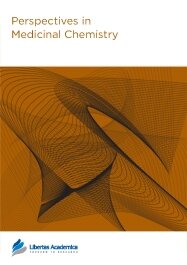

Publication Date: 17 Sep 2007
Journal: Perspectives in Medicinal Chemistry
Citation: Perspectives in Medicinal Chemistry 2007:1 25-38

Department of Medicinal Chemistry, Victorian College of Pharmacy, Monash University, 381 Royal Parade, Parkville, 3052, Australia.
Dedication: Dedicated to the memory of Professor Martyn Ford
Abstract: The acid-base dissociation constant (pKa) of a drug is a key physicochemical parameter influencing many biopharmaceutical characteristics. While this has been well established, the overall proportion of non-ionizable and ionisable compounds for drug-like substances is not well known. Even less well known is the overall distribution of acid and base pKa values. The current study has reviewed the literature with regard to both the proportion of ionizable substances and pKa distributions. Further to this a set of 582 drugs with associated pKa data was thoroughly examined to provide a representative set of observations. This was further enhanced by delineating the compounds into CNS and non-CNS drugs to investigate where differences exist. Interestingly, the distribution of pKa values for single acids differed remarkably between CNS and non-CNS substances with only one CNS compound having an acid pKa below 6.1. The distribution of basic substances in the CNS set also showed a marked cut off with no compounds having a pKa above 10.5.
The pKa distributions of drugs are infl uenced by two main drivers. The fi rst is related to the nature and frequency of occurrence of the functional groups that are commonly observed in pharmaceuticals and the typical range of pKa values they span. The other factor concerns the biological targets these compounds are designed to hit. For example, many CNS targets are based on seven transmembrane G protein-coupled receptors (7TM GPCR) which have a key aspartic acid residue known to interact with most ligands. As a consequence, amines are mostly present in the ligands that target 7TM GPCR’s and this influences the pKa profi le of drugs containing basic groups. For larger screening collections of compounds, synthetic chemistry and the working practices of the chemists themselves can influence the proportion of ionizable compounds and consequent pKa distributions. The findings from this study expand on current wisdom in pKa research and have implications for discovery research with regard to the composition of corporate databases and collections of screening compounds. Rough guidelines have been suggested for the profile of compound collections and will evolve as this research area is expanded.
PDF (421.03 KB PDF FORMAT)
RIS citation (ENDNOTE, REFERENCE MANAGER, PROCITE, REFWORKS)
BibTex citation (BIBDESK, LATEX)
XML
PMC HTML

My experience publishing in Perspectives in Medicinal Chemistry was very positive. The submission process was very quick and easy. I was extremely impressed by the efficiency of the editorial staff and reviewers.
Facebook Google+ Twitter
Pinterest Tumblr YouTube